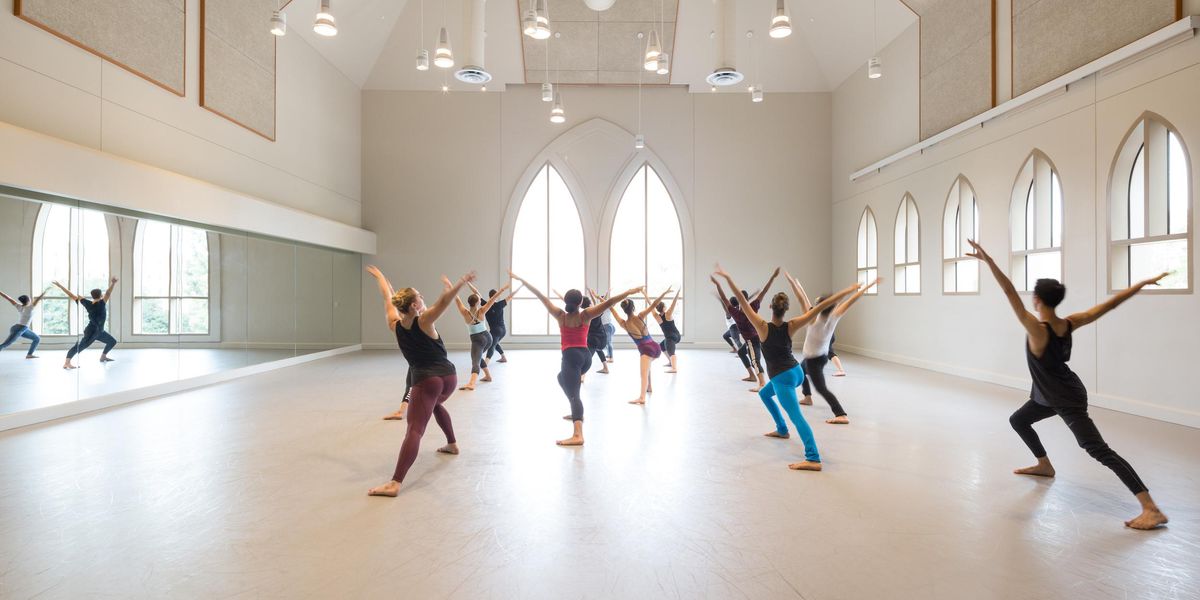Quick Q&A: Clifton Brown
His etched lines, plush jumps, and crystal-clear technique make Clifton Brown a quietly powerful presence onstage. His thoughtfulness offstage comes as no surprise, and his decision to branch out from Alvin Ailey American Dance Theater, the company he’s called home since the age of 18, was made with careful consideration. Brown, who says he was put in dance as a 4-year-old in Goodyear, AZ, because he was clumsy, spoke to associate editor Kina Poon in April. His full dance card includes performing with the newly formed Jessica Lang Dance, which makes its full-program company debut at Jacob’s Pillow this month.
Why did you decide to leave your position as a company member at Ailey and become a guest artist last year?
I’ve been at Ailey for 12 years, and I could’ve stayed longer and been OK. But it’s such an intense schedule, and I wanted to explore a little bit more while I was still dancing. That was my first job, so I didn’t know much else—what it was like to work in different formats, like doing things on a project basis, or things that were more involved as far as the process, versus performance. I had a wonderful time at Ailey and of course I’m very fortunate to still be affiliated with them, but I wanted to see what other kind of work I could do.
How did you got involved with Jessica Lang’s company? I’ve known Jessica for years and I went to The Ailey School with Kanji Segawa, who’s in the company now and who’s her husband. She choreographed a pas de deux on myself and Yuan Yuan Tan from San Francisco Ballet, Among the Stars, which was my first chance to work with her. It was a fast experience but a great one. She was inquiring about my availability to do that again for Fall for Dance [last year], and that’s when I was making the decision about Ailey. And she said, “I’m getting a grant from The Joyce SoHo and I’m taking the opportunity to start my own company. It would be great if you would join.” And I said, “I’d love to.” So it was just fortunate timing.
Clifton Brown, with Kana Kimura, in a Jessica Lang Dance rehearsal. Photo by Takao Komaru, Courtesy JLD.
Her graceful yet grounded movement suits you nicely. What do you like about it?
She has clear ideas, and that raw material is something very tangible to sink your teeth into. I feel like I understand where she’s coming from and can help in some collaborative way—make my ideas manifest, try things out.
And you’re dancing with Lar Lubovitch’s company too.
I’m fortunate that I can go back and forth. Lar is an amazing person to work with and I’ve loved his work for so many years. I got the chance to do his work the year before I left Ailey. Matthew Rushing and I did the duet from Concerto Six Twenty-Two for an event. I actually made contact with Lar in hopes that we could rehearse with him, but that wasn’t able to happen schedule-wise. But he was like, “I trust you two completely. We’ll work together sometime in the future.” And then I was able to join his company. It’s interesting to see what his process is like. It’s a pleasure, a great environment to work in.
What other projects are you working on? I just came back from assisting Jessica in setting a piece on Birmingham Royal Ballet. It’s nice to help be the bridge between her and the dancers who aren’t familiar with her.
And I just set one of Alvin’s pieces, The River, on Rome Opera Ballet, the first time I’ve set any of Alvin’s work. They were fun to work with and very receptive, and I got to perform with them too, so that was cool.
Your relationship with Ailey is obviously still a strong one. How did you address the situation with Robert Battle?
I felt bad that it came at the time when he was stepping in, because it had nothing to do with him being the director—it was just time for me. He was very gracious in considering my proposal to be a guest, because there’s no reason why he would want that kind of headache, as far as casting. But he was very open to working in that way.
Turnover always has to happen at some point. And I think, with so many new members, it’s kind of helpful as far as him establishing himself as a director, as opposed to him trying to impose himself on people who are so used to working in one way. Maybe it’s made things easier for him to make the company more of his vision.
What advice do you have for young dancers? As a young professional, one of the most difficult things to do is to find the balance of learning from the people who have something to offer you, who are experienced and who have come before you, and also finding your own voice. Work at your craft and work at finding who you are, but still be open to the possibility of growth, no matter where it comes from.
At top: Photo of Clifton Brown by Andrew Eccles, Courtesy Ailey.




